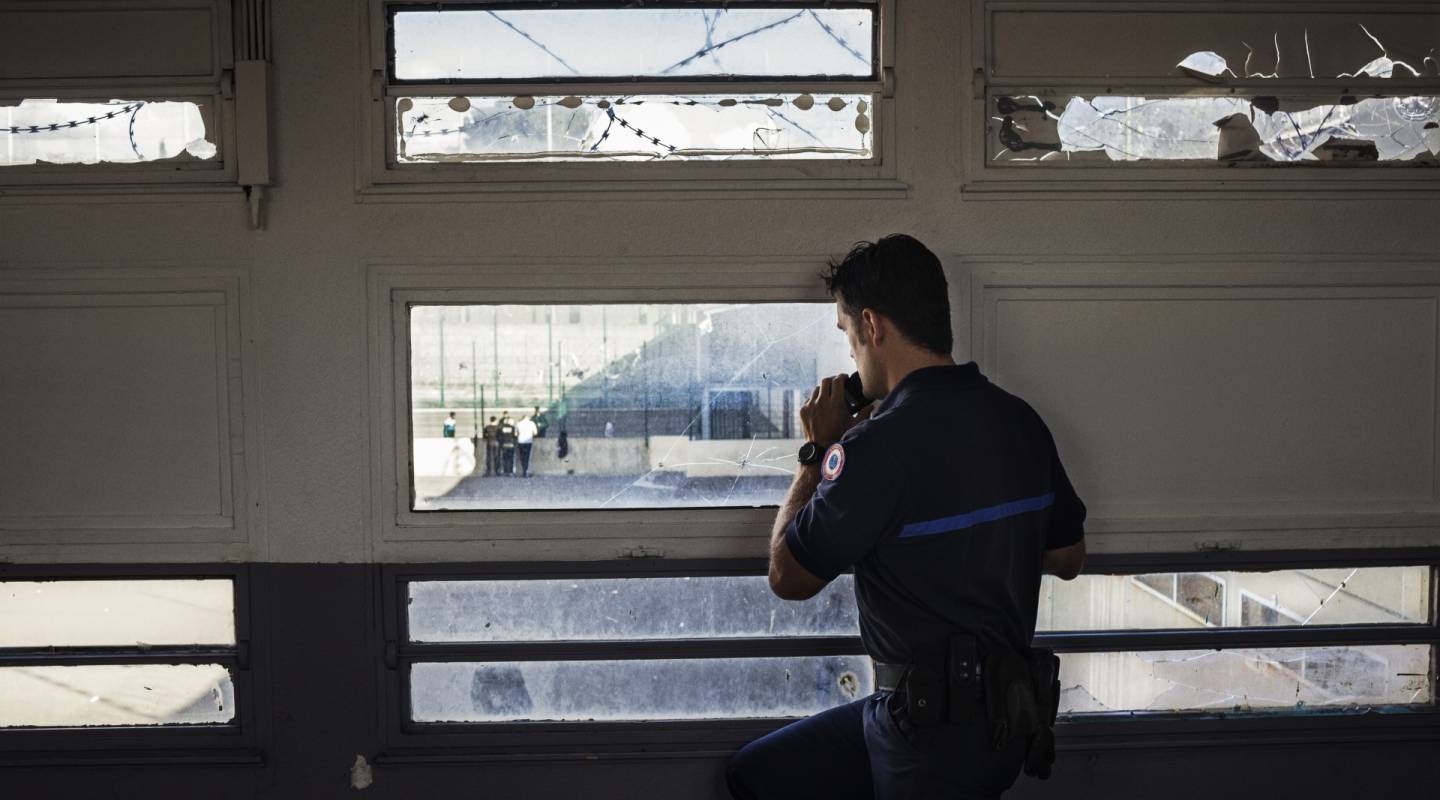
France
Capital city — Paris
Country population
i2021/ INSEEIncarceration rate (per 100,000 inhabit…
Type of government
Human Development Index
Homicide rate (per 100,000 inhabitants)
Name of authority in charge of the pris…
Total number of prisoners
i01/01/2021/ Prison administrationAverage length of imprisonment (in mont…
Prison density
i01/01/2021/ Prison administrationTotal number of prison facilities
i2021/ Prison administrationAn NPM has been established
Female prisoners
i01/2021/ Prison administrationIncarcerated minors
i01/2021/ Prison administrationPercentage of untried prisoners
i01/2021/ Prison administrationDeath penalty is abolished
yes, since 1981The last executio…
Living conditions
Accommodation
The law establishes a minimum standard for living space per prisoner
yes
A 1987 memorandum states that a cell with a surface area less than or equal to 9m² may accommodate one person; a cell of 9-11m², two people; and a cell of 11-14m², three people.
Prisoners are accommodated in single cells
in most establishments
Individual confinement is the norm in prisons, with the exception of those overseas. However, it is not the norm in jails, which house the majority of the incarcerated population. The law has provided for the right to individual confinement since 1875, with this right being reaffirmed in 2000. Moratoriums have followed, with the expectation that the number of places available will be sufficient for the number of inmates to be housed. There may be three people placed in a single cell, and four in a double cell. Judges, parliamentarians and prison administrators still tolerate the placement of several people in one cell. New facilities, which are supposed to guarantee individual confinement, do not do so.
Prisoners sleep on
a bed or a mattress on the floor
Overpopulation is such that not all inmates have beds.
All the prisoners are provided with bedding
The cells/dormitories are provided with electric lighting
yes
The cells/dormitories are equipped with heating and/or air conditioning
yes
Prisoners can smoke
in their cell/dormitory
Cells are usually equipped with one bed, one chair and one shelf or cupboard per person. A small table is shared among cellmates. Cellmates complain that the cupboards do not lock. Everybody complains about the grating that blocks the windows. There is often a lack of ventilation and light in the cells of older facilities.
Hygiene
Prisoners have access to water
in their cells
All cells contain a sink and toilet.
Showers are located in the cells/dormitories
in some establishments
Facilities built since the 1990s usually have a shower in the cell. The sanitary block has a partition wall.
When they do not have a shower in their cell, prisoners have access to the showers three times per week.
Types of sanitary facilities
regular toilets
Sanitary facilities are clean, adequate and accessible
yes
Toilets are located inside of cells; their upkeep is the responsibility of the occupant.
The prison service provides personal hygiene products free of charge
• for new arrivals
• for poor prisoners
A kit containing personal hygiene products (toilet paper, toothpaste, soap, etc.) is provided upon arrival. It does not cover all needs (notably feminine hygiene products) and is only replenished for destitute prisoners.
The prison service provides cleaning products free of charge
• for new arrivals
• for poor prisoners
Cleaning products provided by the prison administration do not always cover all needs. The cleaning kit distributed once a month usually includes: a scouring sponge, a 300ml bottle of dishwashing liquid and a 300ml bottle of multi-surface cleaner. A garbage bag is handed out every day and the bins are collected daily without waste sorting.
Beddings are refreshed
yes
It is the responsibility of the administration or a private contractor to wash bedding.
The administration does not provide clothing. Inmates are not required to wear prison-issued clothing. Indigent prisoners are given lockers. The washing of personal belongings is the responsibility of inmates or their loved ones. The exchange of personal belongings for laundering takes place during visiting hours.
The cleaning of individual cells is the responsibility of the occupants. The maintenance of premises and communal areas is a service provided by paid inmates.Maintenance is often lacking. The proliferation of rats and bedbugs is a recurring problem. Collective showers are deteriorating and often dirty.Older facilities do not meet the minimum requirements despite the renovations undertaken. Hygiene in newer facilities is usually considered adequate.
Food
Drinking water is free and available in all areas of the facilities
Number of meals per day
3
The administration provides three meals a day, at the usual times.
Daily cost of meals per prisoner
$3,43
(3.10 euros)
Food services are managed by
the prison administration and private food services
The prison service is required to meet nutritional standards regarding quality and quantity
Nutritionists in each facility create the menus and determine the portions of food served. The quality and quantity of meals vary from facility to facility. Portions are often considered insufficient.
The prison service provides food that respects special dietary needs
Cultural, religious and dietary practices are generally taken into account, but are sometimes considered insufficient. The absence of halal products is the reason a large number of vegetarian menus are served.
Prisoners eat their meals in
in their cell/dormitory
Prisoners can buy food products
Prisoners can have access to a refrigerator
yes
(rent)
Prisoners are allowed to cook in their cells or in a shared space
in most establishments
Newer prisons have hotplates. People incarcerated in older facilities cook in their cells, with or without permission, using utensils they have made themselves.
Prisoners are allowed to receive food parcels
no
During the Christmas holiday season, everyone is allowed to receive one package with a maximum weight of five kilogrammes; its content is regulated.
Part of the prisoner's food is produced by the prison
no